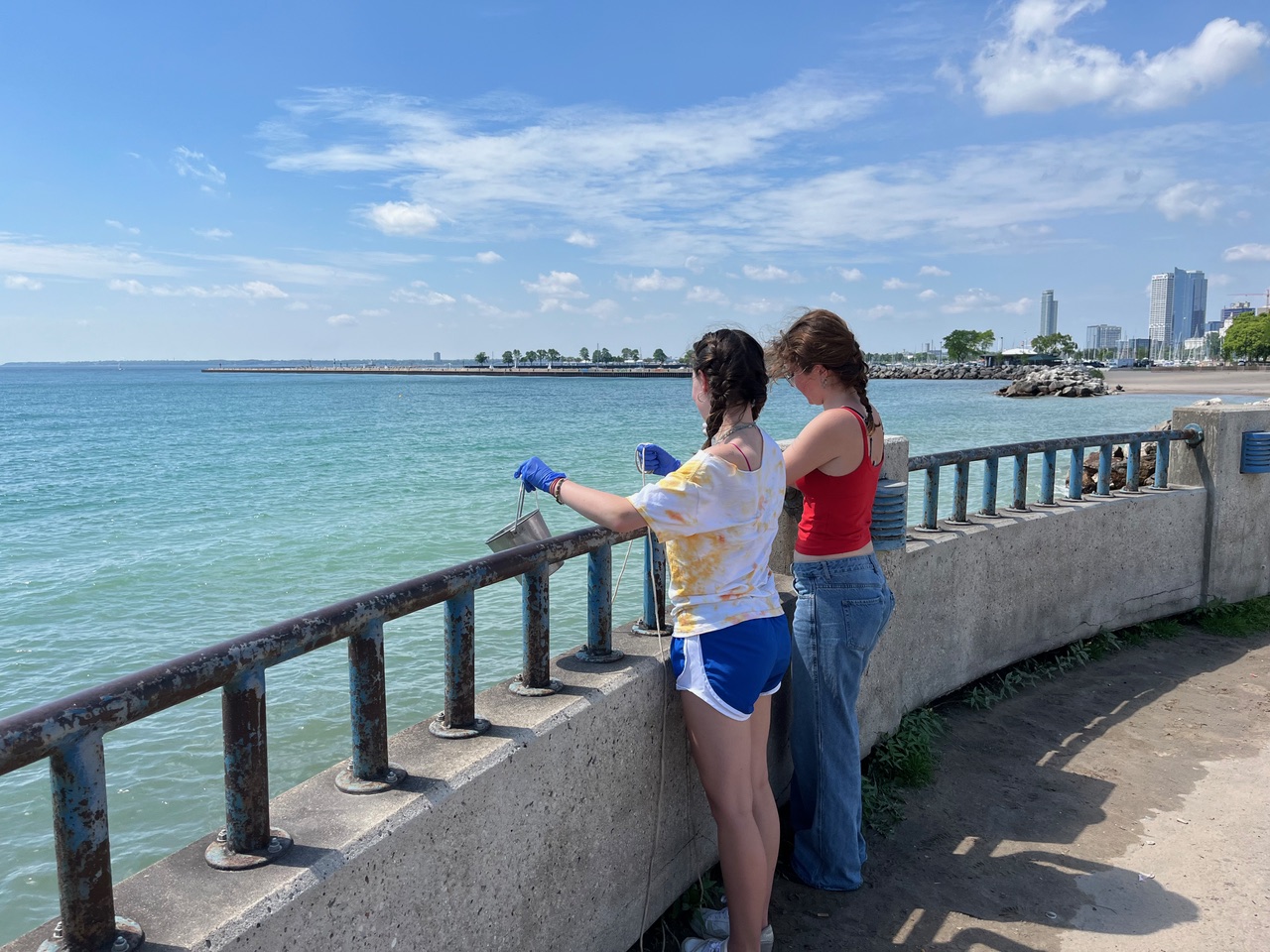Sunlight streams down onto the waters of the St. Louis River Estuary, glistening and reflecting off the surface.
It’s beautiful, yes, but there’s something else going on here, too: The sunlight’s breaking down the molecules of chemical contaminants that have seeped into the estuary through runoff and wastewater effluent.
The natural process is known as photolysis, and it could be an important key to the health and recovery of waters not just in Duluth/Superior, but all across Wisconsin.
Backed by funding from Wisconsin Sea Grant, Christy Remucal, an assistant professor of civil and environmental engineering at the University of Wisconsin-Madison, is part of a team that’s measuring and mapping the ways light is breaking down five pharmaceuticals and personal care products —the insect repellent DEET; carbamazepine, a common anti-epileptic drug; sulfamethoxazole, an oral antibiotic; the antidepressant drug fluoxetine; and atorvastatin, which is used to treat high cholesterol. Four of the five have chemical compounds Remucal said will be easy to work with and study; the fifth, carbamazepine, a compound Remucal characterized as a “bad actor” is both prevalent and extremely difficult to break down, making it an attractive research target. The list of contaminants could evolve further as the project progresses.
Photolysis can occur in two different ways. It can occur directly, as the rays of light hit the contaminant molecules near the surface of the water and begin the breakdown process. It can also occur indirectly, a process through which different types of dissolved organic matter (plant, bacteria, etc.) in the water absorbs light to create radical species that then attack and break down the contaminant molecules.
Each process takes a different amount of time to occur.
“What we’re after is the answer to the question, if pharmaceutical X ends up in your water, how long will it stay there?” Remucal asked. “As you can imagine, a lot of different variables go into that.”
The first is the sunlight itself, since levels of sun in Wisconsin vary wildly, depending on whether you’re talking about July or January. The bigger and more important one is the amount and chemical composition of dissolved organic matter that’s present in the water. That’s one of the reasons Remucal is excited to study the St. Louis River Estuary system—the dissolved organic matter chemistry changes dramatically throughout the system.
“We’re trying to relate the chemistry of the dissolved organic matter throughout the whole system with ultimately being able to predict how fast pharmaceuticals and other contaminants will dissolve.”
In the upper part of the estuary, the organic matter is largely plant-based. Closer in to Duluth and the harbor, wastewater effluent is one of multiple contributors. That diversity is likely to yield results that could transfer easily to other bodies of water in Wisconsin and even other states. It’s also a project that could be replicated to predict what might happen with a growing list of pharmaceutical contaminants.
“There is no shortage of things to work on,” said Remucal.
Remucal is working with Kristine Wammer, an associate professor of chemistry at the University of St. Thomas in St. Paul. The project doesn’t officially begin until next February, although Stephanie Berg, a recent University of St. Thomas graduate, is scheduled to begin collecting water samples in the estuary in August. Remucal’s lab will characterize the size and distribution of the dissolved organic matter in the samples, including using high-resolution mass spectrometry to determine how it absorbs light. Wammer’s lab will perform the water chemistry experiments that link the information together. The team plans to collect samples at different times throughout the year to account for changes in sunlight levels and organic matter composition.
The study’s results could end up creating a tool resource managers, both in the estuary and beyond, could use to direct and prioritize their remediation efforts.
“What we’re likely to find is that photodegradation is going to happen really fast, and that could mean we don’t need to worry about the contaminant, or, because of the chemistry of the water or the location of the contaminant, photodegradation is going to take a really long time. If that’s the case, maybe we need a better treatment process.”





